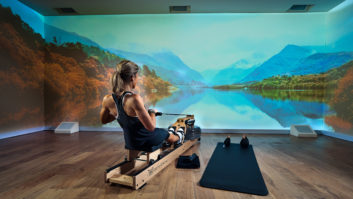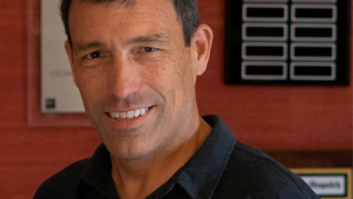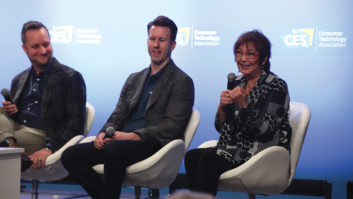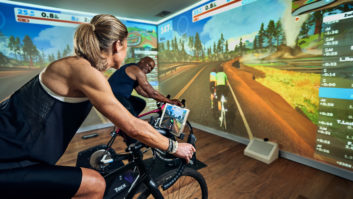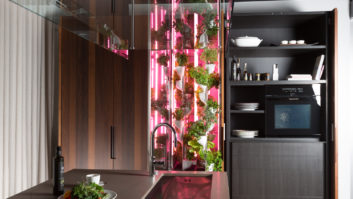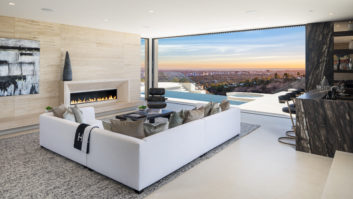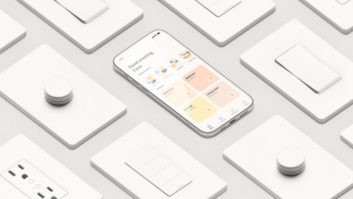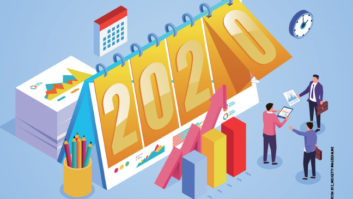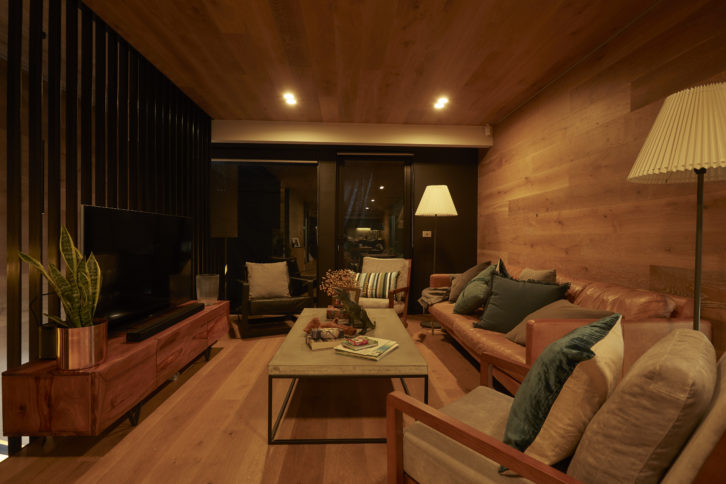
As we’ve reported before in Residential Systems, the health and wellness sector has been gaining traction in recent years, with integrators, builders and developers seizing on the opportunity to boost revenues. That was before the Covid-19 pandemic changed the world, of course, adversely impacting many businesses. But could the pandemic actually boost the health and wellness sector?
“The residential health and wellness sector has seen continued growth since the start of the Covid-19 pandemic, [which] has created a dramatically increased need for devices within the sector,” explains Mitchell Klein, executive director, Z-Wave Alliance.
As people in general spend more time at home, amid pandemic-induced concerns for the health and safety of family members, old and young, they are investing more time and money on health and wellness renovations.
“Due to Covid-19 and the demand that we’ve seen, health and wellness has moved from a ‘nice to have’ to a ‘must have’ overnight,” agrees Paul Scialla, founder and CEO of Delos and founder of the International WELL Building Institute.
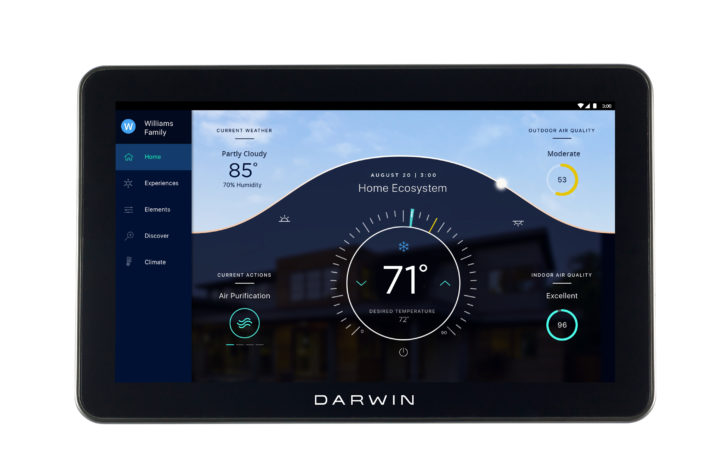
“Even prior to the pandemic, air purification was of particular interest to consumers, especially those where outdoor air quality concerns are more frequent, such as California wildfire zones. Now, airborne transmission has been getting significantly more attention in recent weeks as the virus is proven to suspend in air for a significant period of time.”
It’s certainly true that health and wellness had made its way into virtually every sector of the real estate market even before Covid-19. But the pandemic has sharpened people’s senses when it comes to health, with increases in remote working improving mental health as well as protecting against infection, and a heightened focus on the impact of air and water quality.
“Consumer behavior has shifted its understanding of what it means for their health and well-being to be supported by their environments,” adds Scialla. “Systems like the DARWIN Home Wellness Intelligence network are uniquely positioned to serve global society.”
For multifamily operators, this may mean an increased emphasis on cleaning practices and protocols in common areas and advanced air purification; and in the single-family home market people are increasingly aware of how lighting affects sleep quality and energy levels, plus how water quality and air purification impact upon overall health and well-being.
“It [the pandemic] has absolutely helped as wellness is now top of mind for most people,” says Vinny Lobdell Jr, global president, HealthWay Family of Brands. “We could see noticeable growth pre-pandemic, but from March onwards it has literally exploded.
“The top area is clearly IAQ (indoor air quality), with newly presented evidence that Covid-19 could be transmitted via aerosols that float in the air for hours. Water purification is not far behind as more and more people are understanding that both tap and bottled water are no longer without contaminants like PFAS (forever chemicals) that are damaging to our health.”
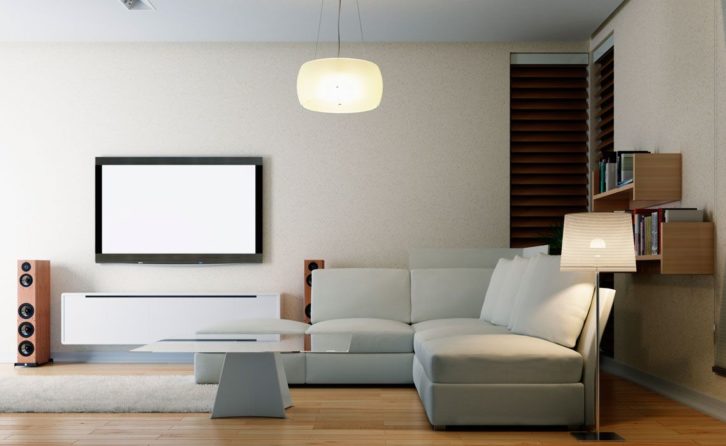
A special report by Green Builder magazine (https://www.greenbuildermedia.com/cognition-smart-data-coronavirus-and-health-wellness) indicated that, due to Covid-19, people are “focused on health and wellness like never before” and that consumers now view IAQ from a ’nice to have’ to a necessity — and that it is as important as location to some homebuyers. Builders were asked which segment of their industry would be most affected (positively) by the pandemic, and the top answer was health and wellness/IAQ.
Residential Systems is now on LinkedIn! Click here to follow us for business and technology insights!
Voice and Touchless Control
One key area of growth in is the voice control market. Voice controlled smart home products and their connected devices allow elderly homeowners to stay at home longer — essential at the current time — and their caregivers/family members peace of mind as they can rely on these systems for assistance and monitoring at home.
“Voice control and touchless automation features within the home make accessing lights, temperature, door locks, and entertainment as easy as programming a scene or using a voice command,” explains Klein. “As we navigate the pandemic, consumers have developed an increased fear of spreading germs from touching surfaces, which has made devices that can act via voice command a safer solution for families during the pandemic.”
Using voice control means there’s one less surface to worry about cleaning. Light switches, dimmers, locks, and appliances that boast touchless access allow homeowners to enter a room and use a simple voice command rather than worrying about physically touching them.
Healthy Real Estate
The success of the high-end health and wellness market is perhaps intrinsically linked to builders and developers as it is to an uplift resulting from pandemic-led health concerns. According to the Wall Street Journal, listings for homes over $5 million containing the word ‘wellness’ have a 39 percent price premium compared with similar listings without the word in New York City. The premium is 72 percent in Los Angeles County.
“While wellness real estate is a growing industry, many spaces typically focus on amenities such as steam rooms, spas or smart home amenities,” says Scialla. “Based on over seven years of research, Delos introduced evidence-based solutions, programs and technologies to the industry, grounded in research across the building and health sciences. Concepts such as healthy materials, air and water quality, and ergonomics, along with overarching policy interventions, have begun to reshape how the real estate community defines a healthy building.”
Delos sees tremendous success with its DARWIN Premier solution, by working through all stages of the design and construction process alongside AV integrators to seamlessly integrate wellness solutions throughout the home.
“By leveraging a comprehensive approach, including analyzing drawing sets, air system layouts and geolocation, testing localized water quality, and creating Equivalent Melanopic Lux (EML) light models to make recommendations for the Enhanced Sleep system, we know that it is also grounded in research and science to holistically support health and well-being,” explains Scialla.
Related: Integration Guide to Health & Wellness: Of Air, Water, and Light
More than Destination Rooms
Klein sees parallels between the high-end home wellness systems and the early days of the home theater market. The concept of a home theater was initially very costly when it started out as a luxury solution for the affluent. Similarly, the current concept of destination rooms focused on home wellness (gyms, yoga, meditation rooms, etc.) is seen as a rich person’s home improvement. But that’s not the whole story of course.
“Much like home theater, home wellness is not limited to only destination rooms,” says Klein. “Whereas multi-room audio brought the entertainment experience to more areas of the home, so too can a well-planned wellness environment. There are so many ways to implement the wide range of wellness attributes; even the smaller-budget projects such as human-centric lighting and other ‘sub-systems’ of these wellness platforms can incorporate the benefits.”
It’s fair to say that it’s still early days for the health and wellness sector — particularly high-end solutions — and while the pandemic has perhaps shone a light on its importance, it remains a new area of expertise for most integration professionals, albeit with huge revenue potential.
“We are very early in the game so to speak,” explains Lobdell Jr. “It is a new category for most custom integrators, so we are going through an educational phase at the moment.
“As with networking, shading, and lighting controls previously, custom integrators are in a prime position to be able to offer the latest in wellness technology as they continue to build knowledge with the products and science behind what constitute true solutions for the built environment.”
Aging in Place
The aging-in-place systems sector has perhaps received the biggest Covid boost, with the elderly at most risk from the virus, and perhaps reluctant to move into more dangerous care home environments.
“After seeing what happened at senior care facilities across the country during Covid, the preference will be both for the senior population as well as their families to keep them at home for as long as possible,” opines Lobdell Jr. “For this to happen homes will have to be outfitted with the latest technology to ensure the safety, health and well-being of our elderly loved ones.”
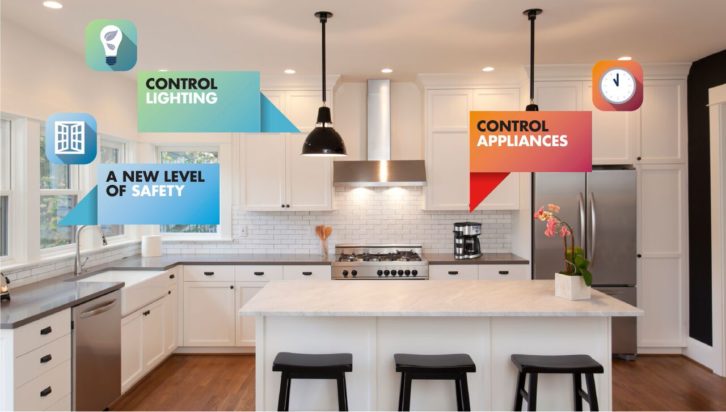
Smart home technology certainly has the ability to help elderly populations live at home longer, with seniors and their caregivers a growing market for technologies that keep seniors safe and free from potential infection. With families limiting outside contact with elderly family members for fear of exposing them to the virus, they are relying on products within the residential health and wellness sector to provide the safety and security that seniors require.
“The aging-in-place market is a growing opportunity for the smart home and IoT industry, specifically within the residential health and wellness sector,” says Klein. “We’re seeing an uptick in sales of devices in a few prominent categories, including security, such as locks and cameras, sensors for monitoring activity inside of the home, and voice control for executing basic commands like turning the lights on when entering the room.
“Seniors and their caregivers are looking to smart home and security devices to provide security and assistance as they age in place during the pandemic. With the help of these devices, caretakers have the peace of mind knowing their elderly loved ones are safe, especially during the pandemic where the elderly population are at a higher risk for contracting the virus.”
Related: Need to Know — Aging-in-Place
Caregivers are able to monitor the activity of their loved ones by installing sensors in kitchens or bathrooms and thermostats that can be controlled via smart phones to automatically set the home to a comfortable temperature. Research also shows that maintaining an optimal humidity level of between 40-to-60 percent decreases viral activity, as well as minimizing allergens that cause mites from forming.
“The science is now showing that the most dangerous ultra-fine particles that we are all breathing in are small enough to pass through the lungs and enter our bloodstream where they wreak havoc on every cell and organ in our body,” explains Lobdell Jr. “A true solution should be able to effectively mitigate against these ultrafine particles that measure smaller than 0.1 microns.”
According to a 2018 survey (Binette, J., & Vasold, K. (2018). 2018 Home and Community Preferences: A National Survey of Adults Age 18-Plus. AARP Research. doi:10.26419/res.00231.001) around 80 percent of adults over 50 prefer to stay in their home as they age, and health and wellness technology makes this possible.
“Due to new technological support at home, there are now expanded opportunities for people who wish to age in place,” says Scialla. “Many of the health and wellness solutions that would support this sector are the same for the residential sector at large: circadian lighting to help improve sleep and cognition and reduce the sundowning effect; lighting to help reduce trips and falls; and improved air and water quality.”
Going forward, post-Covid (if there is ever such a thing!), the health and wellness market looks to be in robust (ahem) health, with a growing number of integrators, builders, and developers adding it to their armory and extended awareness of how the technology can help people to stay safe at home — whether that’s home workers or the elderly.
“As we move forward both during the pandemic and as things return to ‘normal,’ I expect to see continued interest in the health and wellness market,” says Klein. “The Covid-19 pandemic has made consumers more conscious of their safety and well-being, and we expect to see homeowners continue wellness renovations within the home as they focus on creating a safe and secure environment for their families.”
Klein also expects to see the aging-in-place population continue the adoption of smart home and IoT devices that enhance health and wellness. As they look for ways to stay home and limit exposure to viruses and public areas, seniors and their caregivers will rely on smart home monitoring, voice control, and security devices to keep the home safe.
“People are realizing that what surrounds us matters — what we breathe, touch, how we congregate matters,” adds Scialla. “That’s what we’ve been doing at Delos: understanding the relationship between you and what surrounds you. Even as we move into this stage of recovery, this realization has become of utmost importance and awareness now, and will continue to impact how we live going forward.”
Pandemics aren’t new, of course. Recently we’ve had SARs in 2003, Swine Flu in 2009, MERS in 2012, and Ebola in 2014. But Covid-19 is a game-changer, and has informed the mindset of the population; a population that — outliers aside — recognizes that health is more important than ever.
“Scientists are saying that we will start to see similar pandemics every few years,” says Lobdell Jr. “People who lost loved ones during this tragic time would do anything to get them back. This is why health and wellness will always be a priority for people witnessing what has transpired this past year.”
